By Alan Alpers
On May 27, 1945, U.S. Naval Reserve Lieutenant Leo Kennedy was patrolling from his station at Yonton Field in Okinawa. These were the closing months of the war in the Pacific, and Kennedy’s mission was to destroy any enemy shipping he could find. Hanging from the outboard stations of his Consolidated PB4Y Privateer aircraft were two very secret, odd-looking, wooden glide bombs.
Kennedy’s squadron had been equipped that April with the new weapon, and so far the results had been mixed. This new glide weapon, carrying a 1,000-pound bomb in its belly, had shown it could certainly do damage, but it had not exactly hit what its operators had targeted.
As Kennedy came upon a clearing of clouds, a jackpot target suddenly emerged below. As the ships began defensive firing, Kennedy turned his plane out of range. Once safe, he repositioned his aircraft toward the enemy and called to his weapons officer to see if he could “clutch-in.” In moments, the weapon “saw” the target and was released. Kennedy and crew could throttle back, remaining well out of reach of any return fire, and watch the weapon silently drift toward the target, a Japanese destroyer.
Seconds later, the weapon blew off the bow of the ship, and within minutes the destroyer sank. Active guided smart weapons had just been introduced into warfare. The Bat, the first autonomous homing bomb, had debuted.
Only three days later, Kennedy and his squadron, VP-109, set out for the target-rich environment they had preyed upon the previous day on the Yangtze River, near Shanghai, China. Four Privateers, three equipped with Bats, began the attack by sinking an oiler and picket boat and severely damaging a 4,500-ton freighter. On the next pass, they continued, damaging two 700-ton attack transports, a 4,000-ton freighter, two lightships, a 600-ton oiler, and seven picket boats.
On the ensuing run, the lead plane, while preparing for a Bat drop, was surprised by antiaircraft fire from an unseen source and was severely damaged. Two crewmen were badly injured, and their radio was knocked out, so they could not warn their comrades of what lay ahead. The next plane inbound was on a strafing run. It was also hit and severely damaged. Following in the third plane was Lieutenant Kennedy. Suddenly, a 20mm shell exploded in his cockpit. Kennedy was killed instantly. His injured copilot and crew managed to get out of the area and limp the plane home, crash landing at Yonton with a damaged nose wheel in zero-zero visibility.
The very next day, battered and bruised, the squadron was relieved at Okinawa and ordered to retire to Tinian for rest and repair. Kennedy, from Ethlyn, Missouri, was buried in the First Marine Division Cemetery No. 1 in Okinawa that morning, before the squadron left. Later that year, he was awarded the Purple Heart and the Presidential Unit Citation posthumously. His family probably never knew of the top- secret weapon he had carried, only that he died in an aerial attack over China. The Bat, being the first successful “smart weapon,” represents a milestone in U.S. military history.
Building a Tech Advantage
Bat was produced for the Navy as an anti-ship weapon stemming from design work done by one of the divisions of the World War II National Defense Research Council (NDRC) established by Congress. The NDRC comprised resources from various agencies and was headed by Dr. Vannever Bush, who had an office in the executive wing of the White House and reported directly to President Franklin D. Roosevelt without any military intermediaries. Bush was Roosevelt’s adviser on all scientific matters.
The NDRC, which had many divisions, developed much-needed new technologies for the war effort. The Manhattan Project was the most notable. Some others were radar, sonar, variable-timed (VT) fuses, missiles (absent the then classified term “guided”), rockets, and more. Division Five of the NDRC was responsible for the radar guidance of missiles. It was for this missile work that a unique partnership was formed for the development of Bat. Curiously, the National Bureau of Standards (NBS) took a leading role. Today, the NBS is known as the National Institute of Standards and Technology (NIST).
The National Bureau of Standards was, at that time, the primary agency of the United States in scientific matters. Besides maintaining the national standards for weights and measures and the characteristics of the physical elements and their isotopes, it established a wide variety of product specifications, such as shoes for postmen and the military, tombstones for government cemeteries, dams for rivers, and hundreds of other things the government buys.
As an agency supporting the NDRC during the war, the NBS took on design and engineering roles in air-to-surface missiles and VT fusing, as well as pioneering work on turbojet engineering for aircraft. In aerodynamics, the NBS employed people—the most notable being Dr. Hugh Dryden, the future deputy administrator of NASA—who applied the scientific principles of mathematics and physics to develop aerodynamic theory. The bureau operated a modest-sized wind tunnel at its campus on Connecticut Avenue in Washington, D.C. The NBS also had a facility to test rocket propulsion with a vertical motor test stand that looked like a long industrial chimney, confining ensuing exhaust and noise skyward. So, it was natural for the NBS to be involved in the NDRC missile efforts as far as aerodynamics was concerned.
Four Different Bombs
Under the auspices of the NDRC, NBS did design work on four different, yet similar-looking missiles. NBS had the RHB, or radar homing bomb; the SRB, send-receive bomb; the TCG bomb, or television command-guided bomb; and the ARM, or antiradar missile. All four used the same basic airframe and carried the same 1,000-pound general purpose warhead. The RHB served as the predecessor of another system, the Pelican, and the SRB was the predecessor of the Bat. Robin and Moth were the Navy versions of the TCG and the ARM, respectively.
All used simple, low-cost elevons on the wings for control, with the elevons going up or down in synchronism for pitch and opposite of each other for roll-to-turn. Gyros provided stabilization. The airframes were made of steamboat plywood with O-shaped body frames. The Rudolph Wurlitzer Organ Company, still famous for making jukeboxes and organs, made the wooden bodies with their expertise in bending plywood. Steel straps from the wings held the bomb in place.
The main center for the crucial developmental radar work, however, was the radiation laboratory at the Massachusetts Institute of Technology (MIT), known as the RadLab. The missile seeker effort at RadLab was innocuously identified as the Department of Industrial Cooperation (DIC), a subterfuge name to thwart espionage attention. The RadLab was a center of scientific experts thrown together, primarily by Wall Street financier Alfred Loomis, to quickly develop newly emerging technologies during the war and urgently transition these discoveries to production for the war effort.
Loomis had money, influence with Bush, and an enthusiasm for science, as well as personal relationships with top scientists of the era. He was committed to the war effort and did not waste any time establishing a site for new radar technology. Loomis was a key player when the British decided to share their top-secret advancements in radar (one being the cavity magnetron) with the United States in hope of gaining production assistance and support.
Project Dog
The story of the Bat, it could be said, began with Commander Delmar Fahrney, who, in 1936, observed trials of remotely controlled aircraft conducted by Britain’s Royal Air Force. Fahrney was so impressed that upon his return to the States he convinced his Navy superiors of a need for a similar effort.
In 1936, Project Dog was launched, with the Navy taking two Stearman Hammond JR-1 twin-boom, single-seat aircraft and converting them to radio-controlled flight. These aircraft were flown from an accompanying TG-2 Curtiss “mother” aircraft. In 1938, Fahrney introduced the first “assault drone” by attempting to dive-bomb a pilotless N2C-2 into the target ship USS Utah in a Naval demonstration.
With war looming in Europe, the Navy remained interested and continued to fund the assault drone (AD) program, converting obsolete aircraft while striving to improve the technology for delivering these drones against various ship targets.
As far back as 1937, RCA had pitched an idea to the Bureau of Ordnance (BuOrd) for a glide weapon that used radio control coupled with the new technology of television guidance. They had experimented with Fahrney’s assault drone. At that time, the concept was dropped by BuOrd. However, by 1940, RCA was convinced the time was right, and now their proposal might stir some interest. That year, they subsequently pitched their design to the NDRC to use television guidance in development of a glide bomb. The NDRC agreed to fund experiments.
By 1941, RCA had subcontracted for some test models and scheduled a November demonstration at Muroc Dry Lake Bed in California, now Edwards Air Force Base. Their intent was to gather flight characteristics data on their proposed television-guided glide bomb. They had convinced the NDRC they had a sound idea, and the NDRC had assigned the television and radio control guidance work to RCA. Dr. Hugh Dryden, as a world-renowned expert in aerodynamics, was appointed as a consultant for RCA’s concept weapon.
Three future pioneers were observing this demonstration of the RCA glide bomb. Dr. Dryden, who consulted on the flight characteristics, is the youngest person ever to receive a Ph.D. from the Johns Hopkins University, graduating in 1919 at the age of 20. He immediately went to work for the National Bureau of Standards, which hired him for his doctoral work in the new field of aerodynamics. In 1927, he achieved notoriety after he published a groundbreaking report on the aerodynamics of aircraft bombs. At this time, Dryden was chief of the Mechanics and Sound Division of the bureau and an NDRC consultant.
Navy Commander Delmar Fahrney, who later rose to the rank of rear admiral, is arguably one of the main players in the development of guided missiles, having first developed pilotless drones and then later assault drones for the Navy. He claims to have originated the concept of radar-guided weapons. After the war, he was the initial commanding officer at the Naval Air Missile Test Center at Point Mugu and in that role oversaw most of the emergent guided missile programs of that era, including the postwar work on the Bat. Fahrney is as prominent as anyone in discussions of the development of guided missiles.
Designing the Air Frame
Lieutenant Colonel George Holloman was a veteran of the U.S. Army Air Forces and achieved notoriety by test-piloting the first automated landing of an aircraft at Wright Patterson Air Field in 1937. He remained involved with drone experiments and later would run the Army Air Forces’ parallel efforts for RHB (Pelican) and SRB (Bat). Holloman was killed in a plane crash on Formosa on March 19, 1946. The air force base near Alamogordo, New Mexico (White Sands), is named in his honor for his pioneering work in the development of missiles.
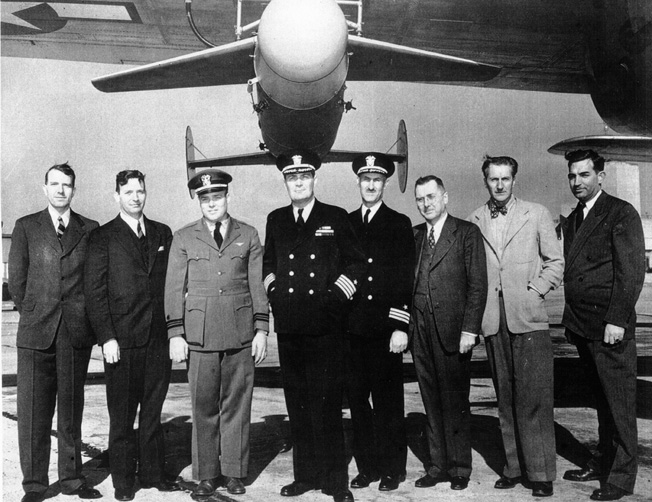
Three models were demonstrated by RCA during the Muroc event. All worked poorly. However, the promise of these weapons remained compelling. The result of this demonstration was that the work would continue, and Dryden was given directorship for vehicle design. The Bureau of Standards was to design the weapon, and Vidal Research Corporation was given a contract to produce the prototypes.
The resulting distinctive airframe shape was the brainchild of a designer at NBS, Hunter Boyd, who had previously worked with a number of early aircraft designs. Not much is known of Boyd. Ralph Lamm, the Bat and Pelican’s receiver/guidance designer and a colleague of Boyd, once said, “He was an outstanding aerodynamics engineer, who could look at a drawing of an airfoil and tell you what its flight characteristics would be.” The problem with Boyd’s designs, in Lamm’s estimation, was that, if anything, “they were too stable and would not accept much control correction.”
Designed originally to carry an Mk 34 2,000-pound bomb with 160 pounds of guidance equipment, early test models of the glide weapon had a 12-foot swept wing and twin vertical tail surfaces at the ends of a horizontal stabilizer. Smaller models were developed for testing at Eglin Airfield in Florida to work out stabilization. Automatic stabilization was achieved in later tests from Lakehurst, New Jersey, using gyros—the first technical milestone. Dryden’s team developed the elevon approach as the vehicles only needed controllable surfaces, initially using radio signals from a police-type transmitter. The smaller, 1,000-pound test design was later adopted for its more favorable weight when placed on an aircraft’s outboard station.
Concurrent with this effort, by March 1942, BuOrd had a team following the experiments in radar homing technology being conducted at the RadLab at MIT. The team, headed by Navy Lt. Cmdr. Dundas Tucker, had, among other things, responsibility for addressing the issue of bombing through overcast conditions. The Navy also had a vital simultaneous interest in the development of antisubmarine weapons to use against German U-boats effectively operating along the U.S. East Coast.
Radar was the promising technological solution to address both the overcast and submarine targeting issues. However, experimentation with radar-guided bombs revealed the problem of a high angle of approach, thus having a technically substantial reflectivity problem with the return signal from the ocean surface. A weapon with a lower angle of approach to the target would have much less difficulty with this problem. Eventually, Tucker’s team generally believed that the AD program, under the direction of Fahrney, could provide the needed low-angle approach required. It so happened that Fahrney’s Project Roger under the AD program was already exploring the use of radar in attack vehicles.
Developing the Radar-Homing System
Fahrney’s response to the BuOrd team was enthusiastic; however, his resources and time were limited. Fahrney later recalled that he advised BuOrd that the Bureau of Aeronautics had only aircraft-type weapons under development (a program dubbed Project #115), but that “the Army Air Forces (in Holloman’s project) had made many successful drops of standard bombs fitted with wing and tail surfaces, which the NDRC had developed via Dr. Dryden at NBS.” Fahrney was keenly aware of Dryden’s progress since the two had watched the initial failed endeavors of RCA at Muroc Lake in November 1941.
As rapidly as personal computing technology progresses today, radar technology progressed during the early 1940s, beginning with the onset of Germany’s hostilities in World War II. There was constant pressure from the Navy leadership to use radar to solve targeting issues and to implement any developments quickly.
One original concept emerged as Pelican. This glide bomb could address the issue of overcast bombing and nighttime and beyond-visual targeting, and the scientists involved felt technical issues could be quickly resolved. Initially, Dryden’s radar-homing missile could house only a receiving unit and used the parent drop aircraft as the radar-signal initiator, or illuminator. The patrol aircraft would thus find the target with its large nose radar, wait for the missile to “see” a reflection, and begin its homing on the mother aircraft’s reflected signal once released.
Because radar equipment quickly reduced in size, MIT engineers soon found they could put a small enough transmitter into the nose of a glide weapon, actually downsizing the front end a bit, and make the weapon completely self-guiding. This derivative was enthusiastically pursued while the issue of standoff was dealt with, as it was obviously better not to have the aircraft flying toward any target while attempting to keep it illuminated. Pelican did have a longer range but did not offer the “fire and leave” option.
This new send/receive version would then, simultaneously, send out its own radar signal with that of the mother aircraft. When the weapon apparently saw what the nose radar in the plane saw, it would be locked on and released, guiding itself autonomously toward the target with no human in the loop. The newly emerging effort became known as the SRB, and Bat in Navy circles.
From Pelican to Bat
While these developments took place, the initial Pelican design was deemed ready for service, and 3,000 at a rate of 300 per month were ordered into production. Disappointing results during concurrent field testing quickly reversed this decision, however, and the weapon was returned to development. Production was scaled back to 800 units. It is not clear how many actually were produced. By now, the Navy brass, enamored of the idea of adding fire-and-forget capability to the overcast bombing issue, decided to scrub the Pelican’s deployment in favor of the soon to be available Bat. Additionally, the RadLab had been fidgeting for months to get out of Pelican guidance work, believing it no longer made sense to pursue perfecting the less-favorable system. Pelicans were stripped of their classified electronics for reuse in the Bat program.
At one point, the ever-frugal NBS staff toyed with putting the new Bat SR unit into the already delivered Pelican airframes. This could be done for about $10,000 a unit, which was considered a bargain. Navy officials balked at the idea, unhappy with Pelican’s reputation, further delaying possible war use of the new technology called SR. Thus the PMB, or poor man’s Bat, which never really became a program, failed to go into development although it reportedly was successfully demonstrated to Navy officials and could have sped up technical understanding of real-world warfare challenges.
Sending the Bat to the Pacific
The Bat program was established on January 7, 1943. By December 1944, the BuOrd felt the research had progressed to the point of introducing the weapon into the Pacific Theater. Today, what is known as “operational evaluation” had to take place before too few opportunities to use the new secret weapon were available. Three thousand Bats were ordered into production. By the end of hostilities, about 2,580 Bats remained in inventory.
“The Bat,” as it was dubbed by Captain Dundas Tucker while part of the “Washington Project,” eventually became known as SWOD Mk-9 (Special Weapons Ordnance Device Mk-9) by the time it was introduced in the Pacific. It carried a 1,000-pound general purpose bomb, had a 10-foot wingspan, and was around 12 feet long. The total weight was between 1,600 and 1,700 pounds depending on the variant. Launch speed was between 140 and 210 knots, and once released it flew between 170 and 320 knots.
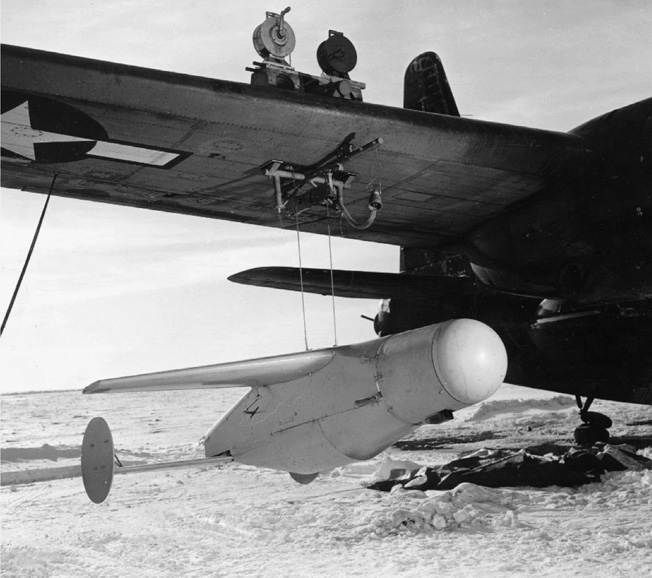
Three squadrons with specially adapted Privateer aircraft were slated to introduce this new weapon in combat. Patrol squadrons VP-109, VP-123, and VP-124 were dispatched from Pearl Harbor to the South Pacific to use the weapon under any “correct” conditions and then report to an eager Navy brass in Washington, D.C. All the training was brief, with VP-109 receiving the least amount, only 10 days, before leaving for the South Pacific.
Leo Kennedy had first seen the weapon dropped in a twice-failed demonstration for admirals in Pearl Harbor in April, just before the squadrons headed off for their new assignment at Puerto Princessa, Palawan, Philippines. Despite these failures, enthusiasm continued for the new weapon.
A Thrilling Failure
The squadron’s orders were to engage in “locating and reporting enemy surface forces and aircraft [with] destruction of enemy targets within the capability of the search plane desirable.” On April 23, Kennedy found his opportunity while patrolling with his squadron mate, Lt. Cmdr. George Hicks. In two separate drops, however, both their Bats failed to find the target. Five days later, after these duds were launched, Hicks and Lieutenant Donald Chay released three more of the weapons during one attack with far more spectacular results.
While patrolling at Balikpapan, the two pilots spotted a large Japanese troop transport that was docked. Staying well out of range and presumably not yet spotted by the enemy, Hicks clutched-in his Bat and released the weapon. Meanwhile, Chay did the same and launched his first of two Bats. As the Bats approached silently, suddenly there were massive explosions caused by the 1,000-pound payloads of these missiles.
Hicks’s Bat missed the transport but hit a 600-ton freighter in the line of sight directly behind the target. The freighter and dock were completely destroyed. Chay’s Bat hit a 600-ton freighter directly in front of the targeted ship. Chay’s second Bat then homed in, apparently on target. However, during the last 2,000 feet or so, the weapon turned 45 degrees and headed toward shore, striking a large oil storage tank and causing a violent explosion. These particular Bat strikes were still determined unsuccessful. The weapons officers were convinced that the weapons “saw” the target, and yet the targeted ship was not struck.
Back in Washington, D.C., there was disappointment and some embarrassment because the oil facility that had been obliterated was on a no-strike list, a site once belonging to the British, who were hopeful of reacquiring it as the Japanese retreated. Officials would have to explain things to the British and also reveal something about the existence of the classified smart weapon.
Mixed Results, Unanimous Enthusiasm
The weapon had potential, but its use parameters were limited. It was heavy and thus reduced an aircraft’s patrol range. The radar guidance did not work well against land backdrops, so the squadron searched for ships on the open sea. With little training, a hot, humid environment, and dusty airfields, the wooden glide-bomb did not perform as hoped. Four civilian scientists from the NBS were sent to keep the units functional.
When a Bat finally did hit a target, enthusiasm swelled. As fewer targets were found, VP-109 soon moved to Yonton Field, Okinawa, where more Japanese shipping could be located. Tucker, the Bat’s program manager for BuOrd, came along to encourage the Bat’s use by the squadron.
By the end of the war, just a few months after the Bat’s introduction, reviews of the weapon were mixed, but all agreed the potential was exciting. If it had been available earlier in the war, the Bat could have had a major impact. Certainly, more technological issues could have been identified and overcome. Obviously, it could make a dramatic difference in any future conflict.
Project TED
After the war, Navy brass were still keenly interested in the potential of smart weapons. The Bat had worked, at least somewhat, and given the experience in the South Pacific there was hope that a dedicated technological study could improve the system. Project TED was initiated at the Pilotless Aircraft Unit (PAU), Naval Air Station Mojave, on September 27, 1946, further evaluating the Bat for fleet use. Just four days later, this unit was officially transferred to the new Naval Air Missile Test Center (NAMTC) at Point Mugu, California. Fahrney was put in charge of the center, reuniting him with the ancestor of the weapon he first observed with Dryden in 1941.
The purpose of Project TED was to evaluate the missile performance and its radar homing while modifying and shipping 300 Bat missiles to the Pacific Fleet Patrol Squadron. Two versions of the missile existed at this time, Bat-0 and Bat-1, with Bat-1 being slightly more advanced. A total of 150 of each type of Bat was to be evaluated.
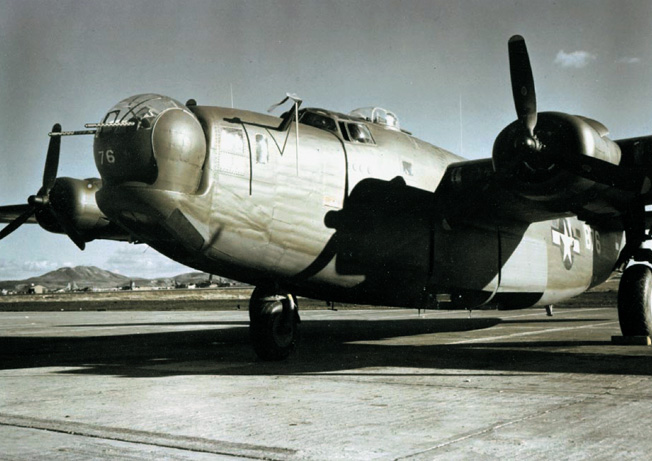
At the project’s conclusion in March of 1949, nine modifications were made to improve the Bat’s accuracy. The most intriguing involved the tail. Placing the weapon on the PB4Y-2B aircraft had caused the tail shape to be changed for clearance of the aircraft’s wing flaps. These adjusted tails were considered a possible cause of several failures at the flight termination of the weapon. With more than four inches taken off the missile tail’s top, it was determined that drag had changed, causing the radar to provide an “up” command correction as the last usable guidance signal just before impact. Thus, the weapon overshot the target consistently. Trimming the bottom portion in an equal fashion solved the problem.
The final NAMTC report concluded that 17 of the 20 drops were successful, renewing the weapon’s viability. By February 1948, typical ranges had extended to more than nine miles with a launch altitudes of more than 11,000 feet. The following year, a recommendation was made to retrofit all existing Bat missiles with nine modifications and to ensure a large supply of spare parts was available because damage in transit was likely. Further work was still necessary on some electronic components.
Grounding the Bat
Demonstrations in war games in Hawaii later that year were unimpressive—four failures in a row. Also the weapon was quickly outdated by developing technology. Homing missiles with rocket propulsion were coming to the forefront as the Sparrow and Sidewinder programs emerged. Additionally, the experience with the hot and humid environment of the South Pacific doomed consideration of any missile with a wooden airframe.
By 1953, the program was over, with the remaining airframes stripped down to become aerial targets. A few remained as test vehicles for new ARM seekers (which became the Corvus Program) and were dubbed Battu’s (Bat test units). With only a few years of development, a last-minute introduction into the war, and a short life in the operational inventory, the Bat remains in obscurity despite its milestone status. It remained classified until after the war, and even then only a few details were available or they were not made public until the early 1960s. The Bat is recognized as the first true smart weapon.
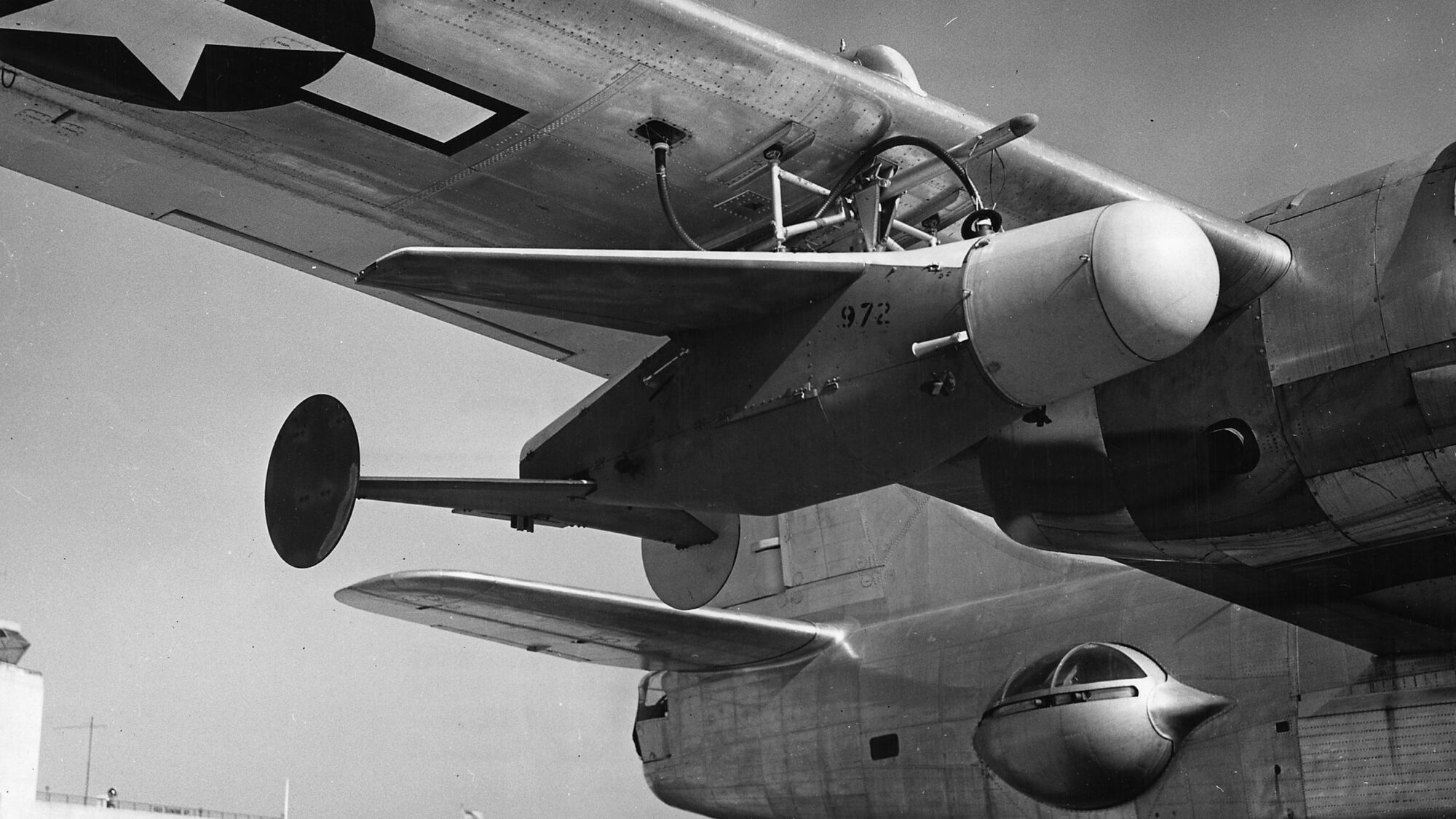
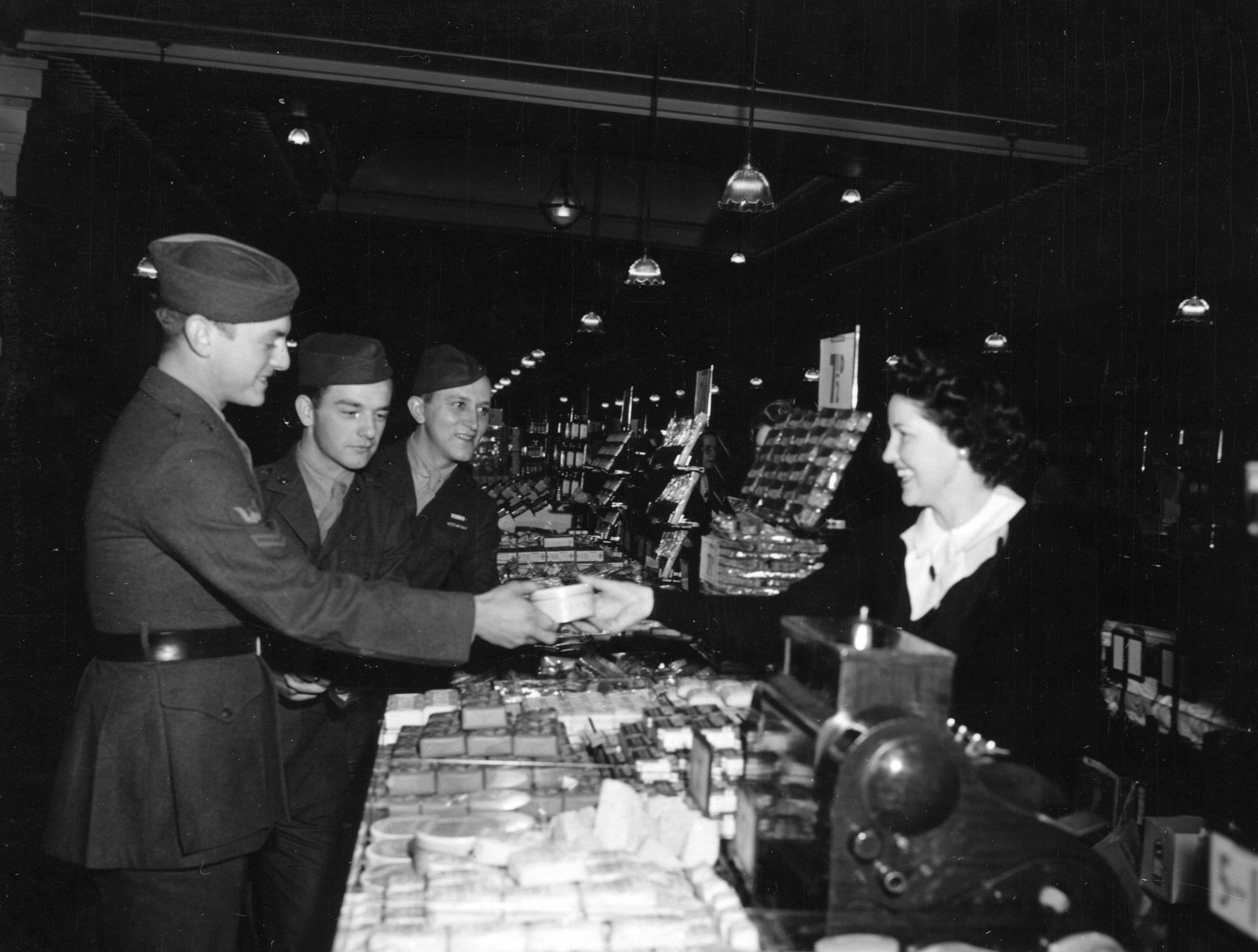
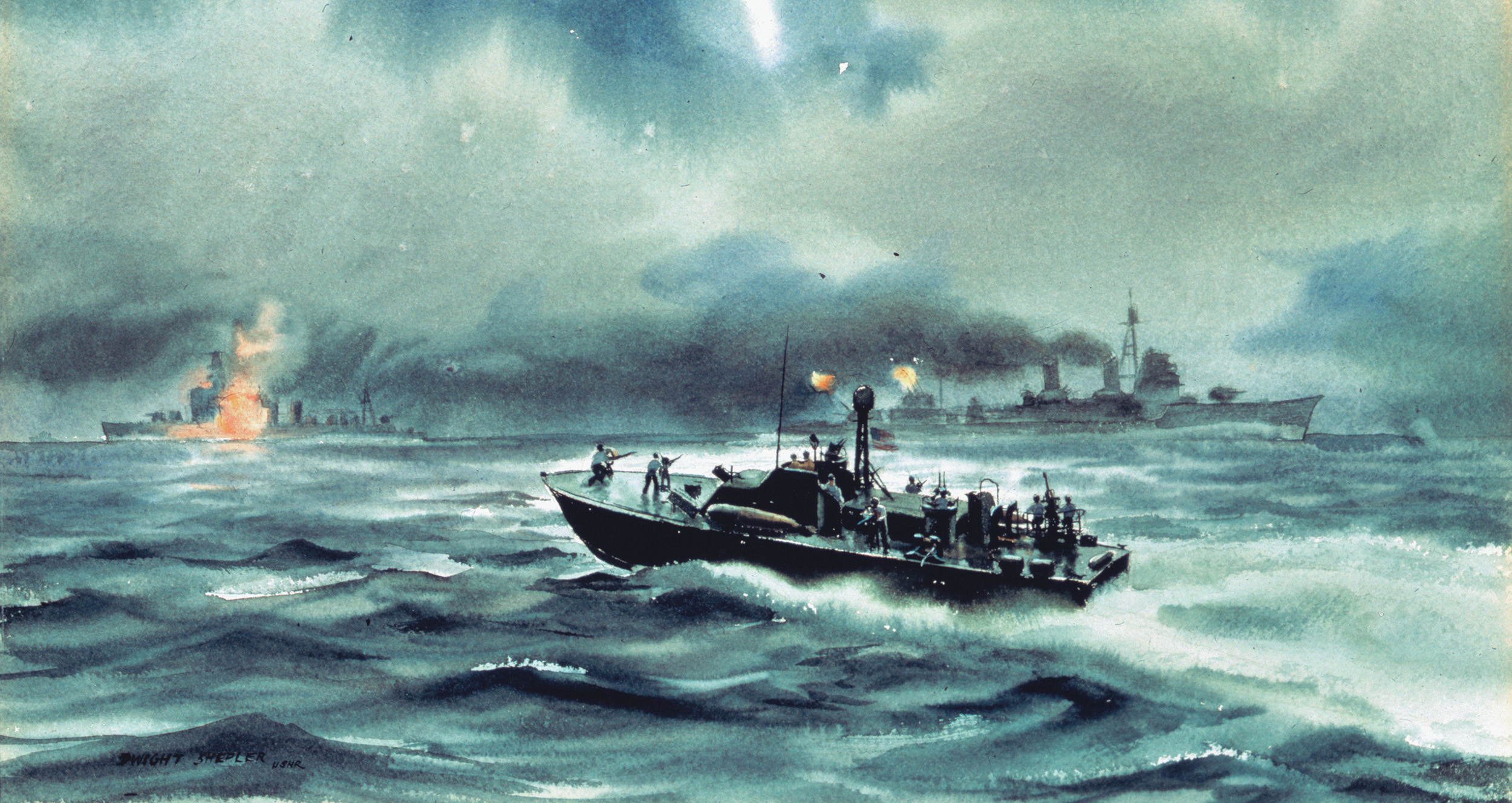
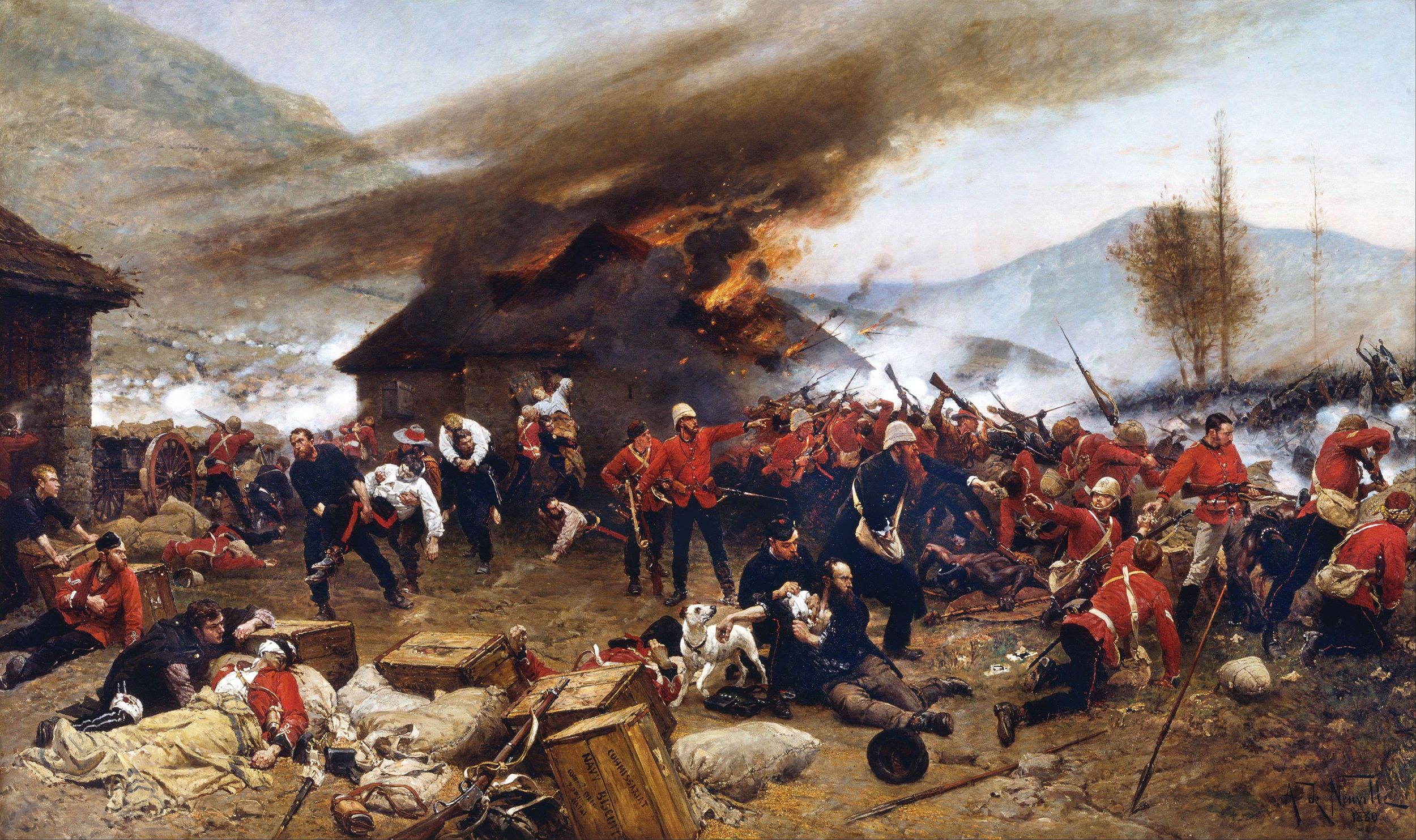
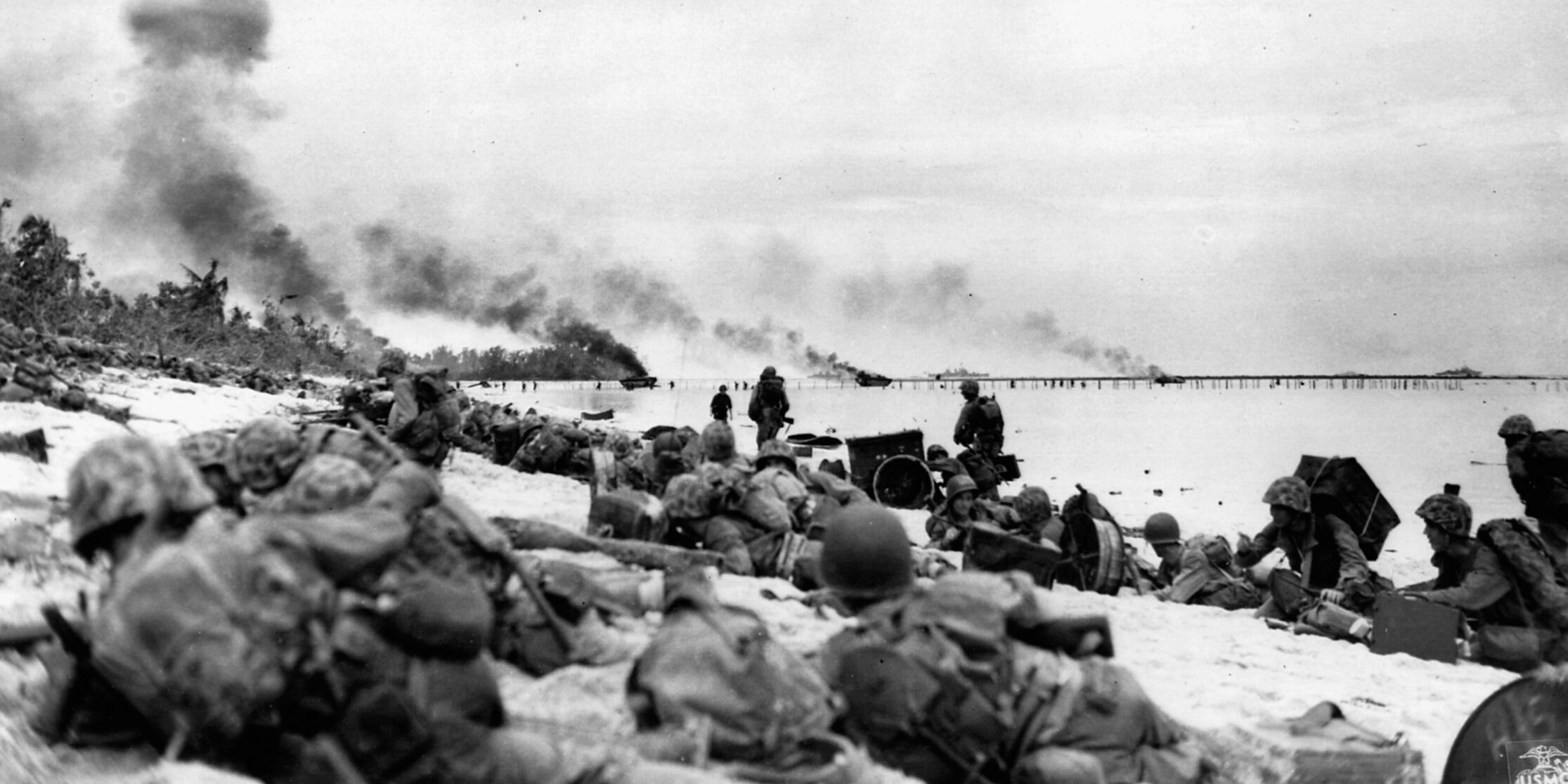

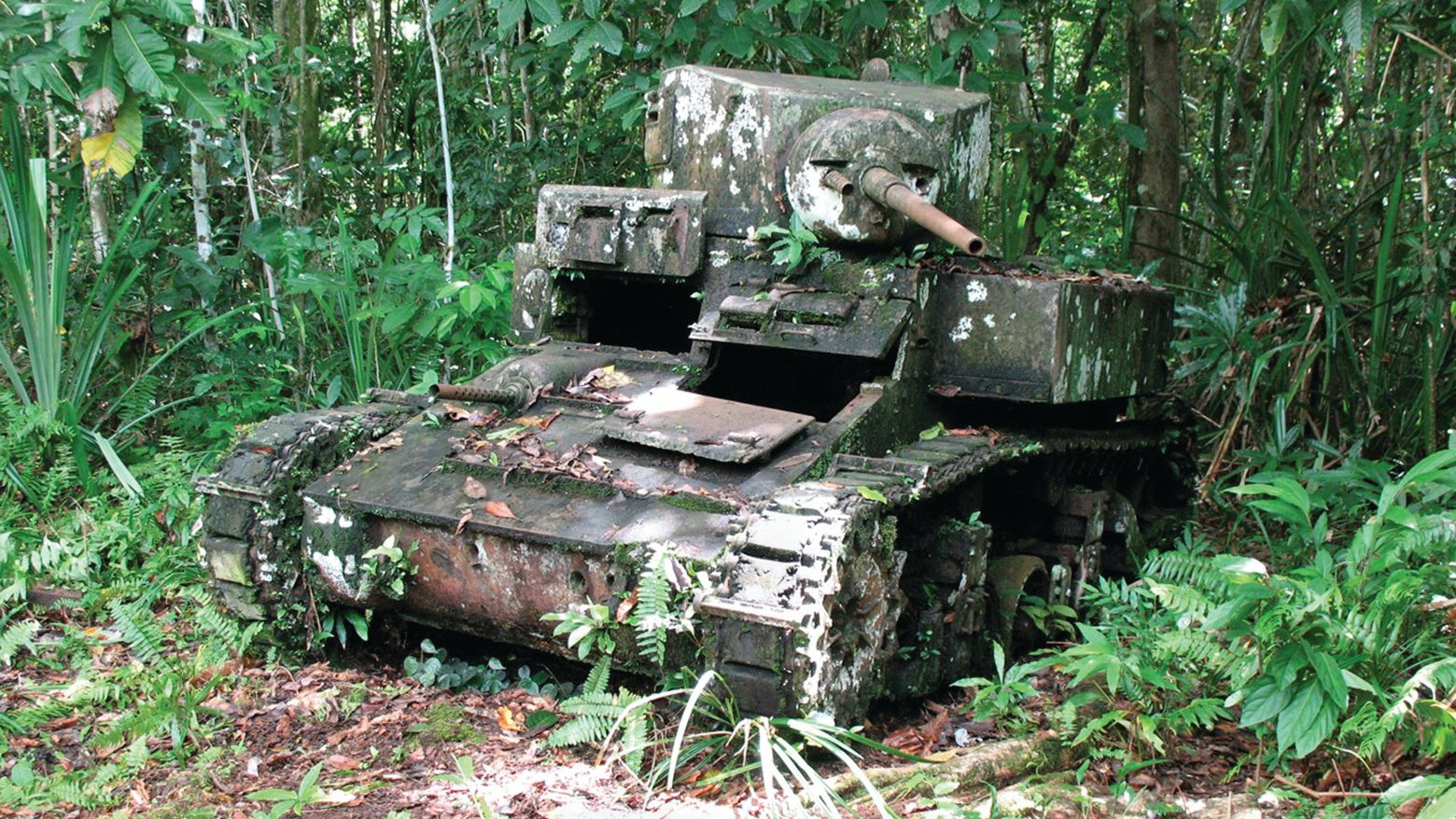
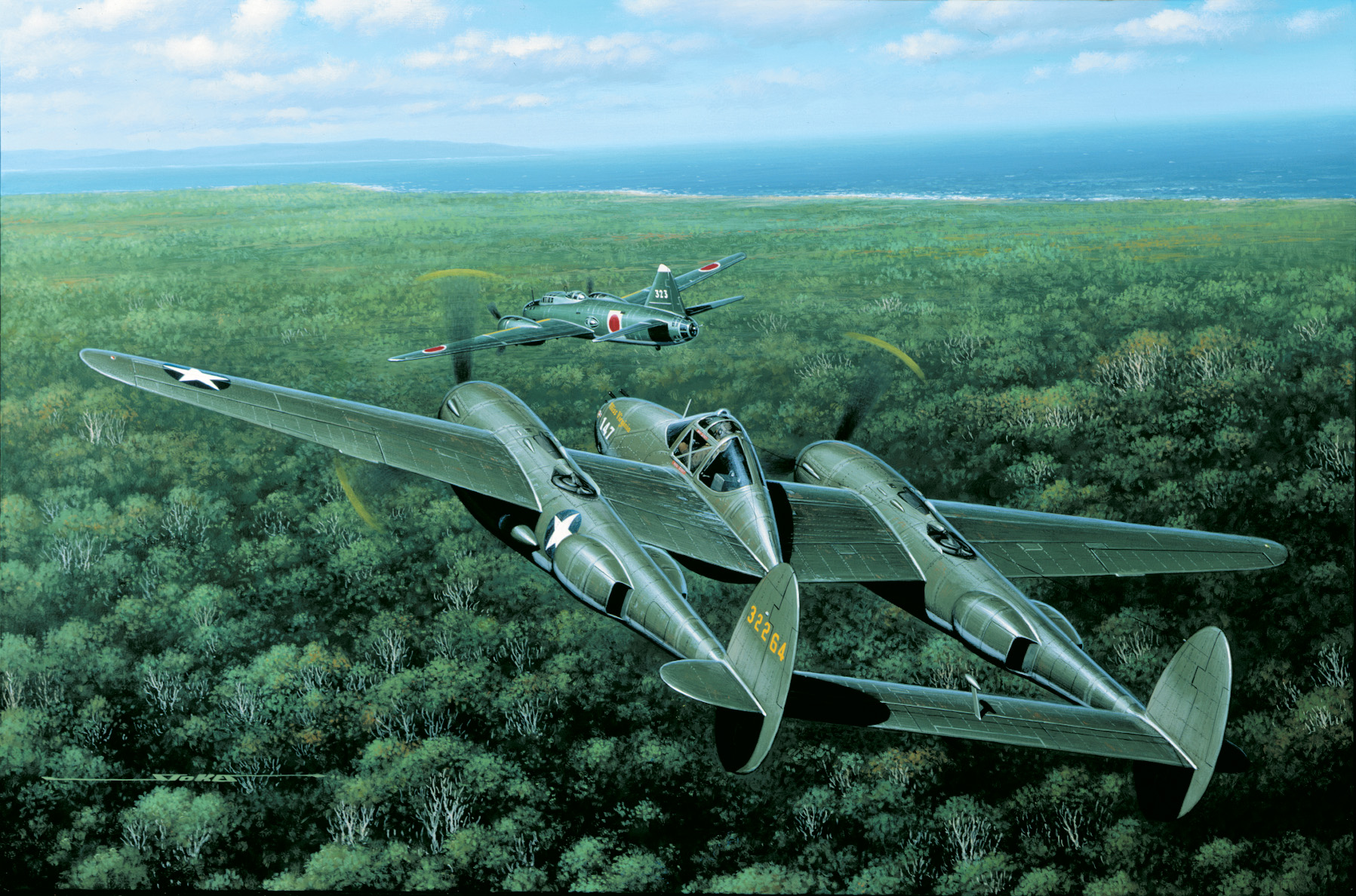
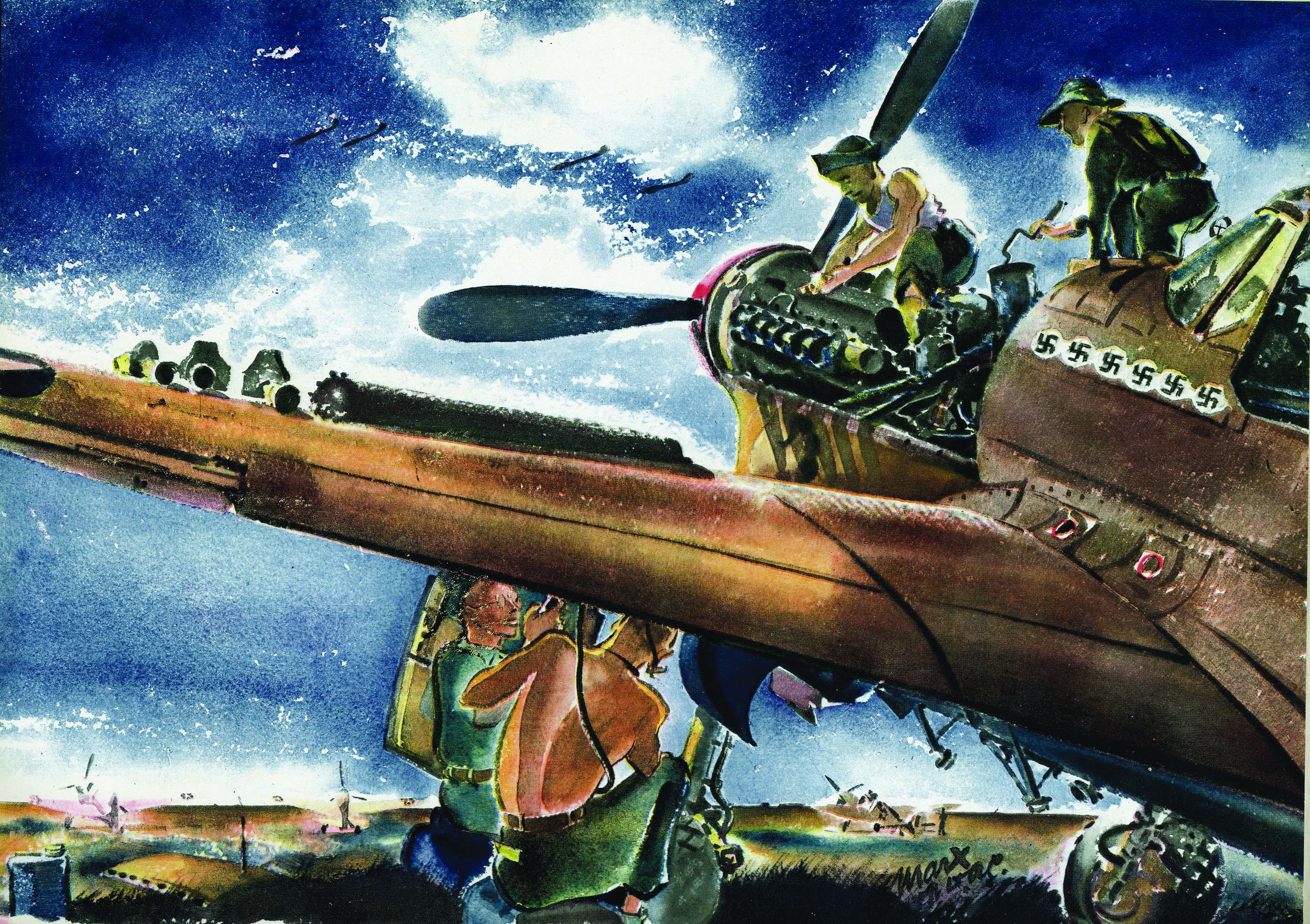
Join The Conversation
Comments
View All Comments